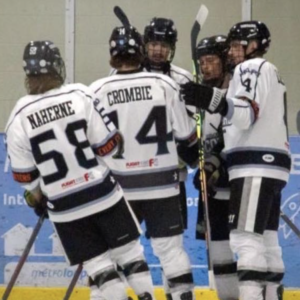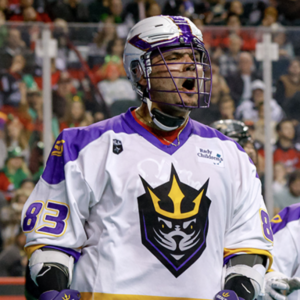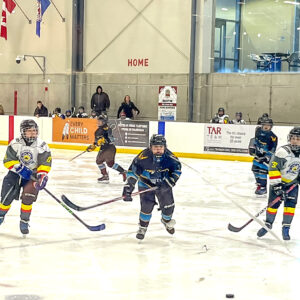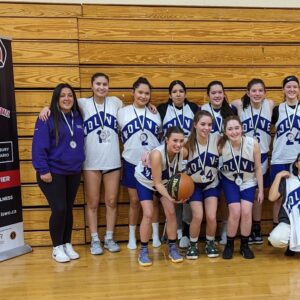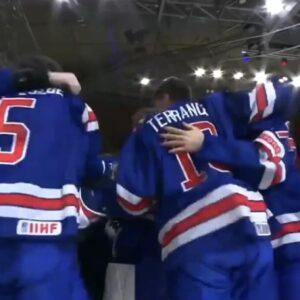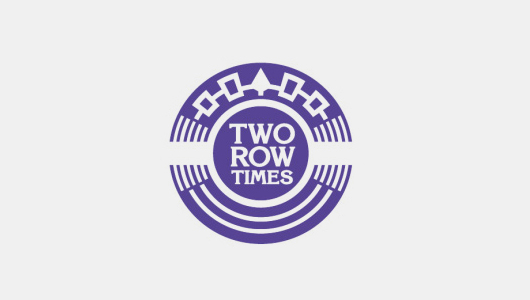
INUKJUAK, Que. — Elder Simeonie Ohaituk sits on a caribou skin on the floor of the Unaaq Men’s Association in Inukjuak, Que., pulling and cutting a stretchy, cylindrical piece of sealskin.
He makes smooth, even cuts, the length of rope piling up on the ground as he pulls and another elder stretches and turns the sealskin over and over. It’s a two-man job, he says, requiring an even stretch each time.
The skin has been carefully cleaned of fat and fur by another elder using an uluk, a woman’s knife with a distinct crescent moon shape.
Ohaituk explains what he’s doing in Inuktitut with Charlie Nowkawalk translating his words into English as about a dozen young boys crowd around to watch.
Within minutes, the patch of skin is a rope more than 30 feet long, consistently the width of a thumbnail. It can be tied in knots before it’s dried into a hardened line that’s strong enough to haul a bearded seal, which weigh up to 800 pounds, from under the ice.
This used to be the only way Inuit could make rope strong enough for hunting and pulling dogsleds. It was also, Ohaituk says, a good excuse for men to spend time together.
“We really admire our elders,” said Tommy Palliser, assistant manager of the men’s association. “They tell us stories about how it has been before and you really can’t learn that anywhere else.”
These elders — men and women — are passing their skills on to young men in Inukjuak, ensuring they have the knowledge to hunt, fish and live on the land.
“We certainly sleep better, knowing that we are helping to provide some time and space for these young men to grow,” Palliser said.
“It makes us very proud, and also humble.”
Unaaq was formed after a number of young men died by suicide in the late 1990s and early 2000s. At a community meeting to talk about the social issues, Nowkawalk said, the women of Inukjuak asked the men, “What are you doing to help?”
It’s precisely this kind of work Mary Simon wanted to highlight during her weeklong visit to Nunavik, which ended Friday. It was a homecoming for the Governor General, who spent time in Kuujjuaq, where she went to school and returned to live as an adult, and Kangiqsualujjuaq, where she was born and close to where her father ran outfitting camps.
The stops along the way were intended to showcase resiliency, reclamation of language and culture, and community-driven solutions to some of the challenges of living in the North.
At the Unaaq Men’s Association, Palliser’s son Ray Berthe said he has been part of the group since he was 12.
“I really want to learn my culture and pass it on to the next generation, start teaching them,” he said.
Berthe, 20, is one of the young men bringing dogsled teams back to Nunavik. His seven-dog team is led by a husky named Sakkuq, which he explains means “bullet” in Inuktitut.
They’re fed a traditional diet as much as possible. Local hunters ensure they have enough to eat by providing scraps of caribou and seal.
Asked what they’ve taught him, Berthe smiles and says, “hard work.”
Dogs have been an important part of life in the North for more than a thousand years.
Dogsleds enabled people to travel further and faster, stretching out hunting and trapping territory. The Canadian Inuit dog is a unique breed descended from the dogs domesticated by the Thule, ancestors of the Inuit. It’s estimated there were 10,000 to 20,000 living in the North in the 1920s, but by the late 1960s the species was extinct.
Tens of thousands of dogs were slaughtered, mainly by the RCMP, under laws that prohibited them from being allowed to run loose. The loss of this important means of transportation was devastating to the Inuit, who were cut off from hunting, trapping and fishing grounds and confined to year-round communities.
In 2019, the Canadian government apologized to the Inuit and committed to funding a sled dog revitalization program.
“Vehicles nowadays, they always have problems,” said Berthe, who recently completed a mechanics course in Kuujjuaq. “But dogs, we don’t need parts or any gas.”
In 2018, Unaaq was awarded a $500,000 Arctic Inspiration Prize to continue its work.
Palliser said they want to get the word out about Unaaq, in the hopes other communities across the Arctic will form men’s groups of their own. That’s already happened in two Nunavik communities.
Throughout the Governor General’s journey through Nunavik, she was greeted by cheering crowds. People hugged her and shook her hand, and said how proud they were of her achievements. Teachers, students, elders and organizers called her a role model.
At school visits, Simon told students how important it is to finish their education. She answered their questions — everything from her favourite colour, to whether she’s hunted caribou, to why she accepted her current post.
She told them about her experience with discrimination and talked about her hopes for the next generation of Inuit. Self-determination is the next step toward ending the reliance on fly-in workers from the south, she said, and instead filling the northern labour force with Inuit who have the skills and education needed.
“We need to decide what kind of governing system there’s going to be, and then identify where the gaps might be,” she said in an interview
On a personal level, Simon was able to reconnect with family on this trip.
At the Avataq Cultural Institute in Inukjuak, she said she was “very touched” to be given a copy of her own family tree, tracing back generations of ancestors even she didn’t know of.
“It’s been a wonderful experience and feeling of coming home again,” Simon said.



